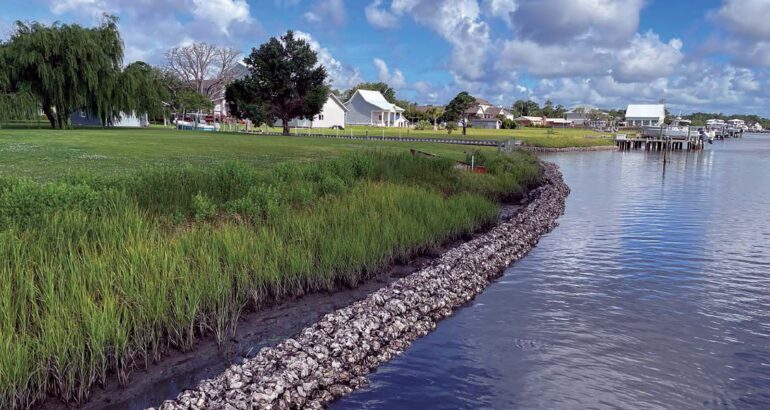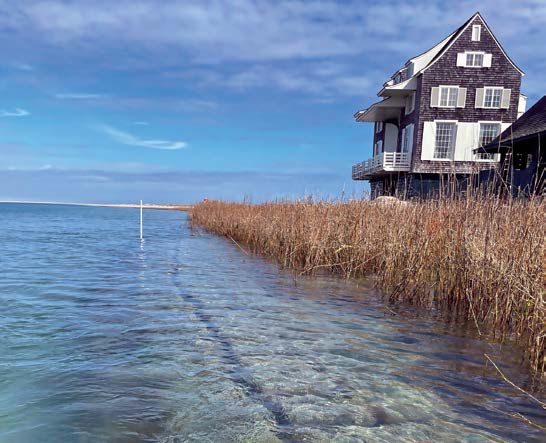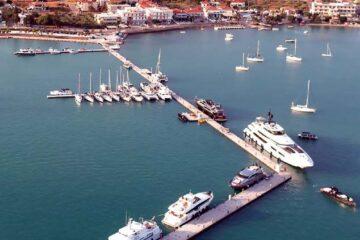When oyster bars and restaurants on North Carolina’s east coast closed during the pandemic, local restoration company Native Shorelines was deprived of shells used to build marshes. They came up with a better solution.
By Warren Miller
Coastal erosion is increasing globally. But nowhere, perhaps, is the threat greater—or more subtle—than in littoral North Carolina, the shores of rivers and sounds behind the Outer Banks barrier islands. Jutting far into the Atlantic Ocean, the region is directly in the path of hurricanes, and the low-lying, waterfront is exposed to rising sea levels in a way that more elevated coasts are not.
This has long been a concern both of state government— the Coastal Resources Commission (CRC), which administers the Coastal Area Management Act of 1974—as well as a non-profit coalition of coastal communities and businesses, the Coastal Federation of North Carolina.
Support for natural solutions to shoreline preservation was given a boost by a study conducted by the University of North Carolina (UNC) and published in the Ocean & Coastal Management journal in 2014. The study looked at how different kinds of coastal remediation, from bulkheads to natural developments, fared during Hurricane Irene, a Category 1 hurricane that struck the area in 2011.
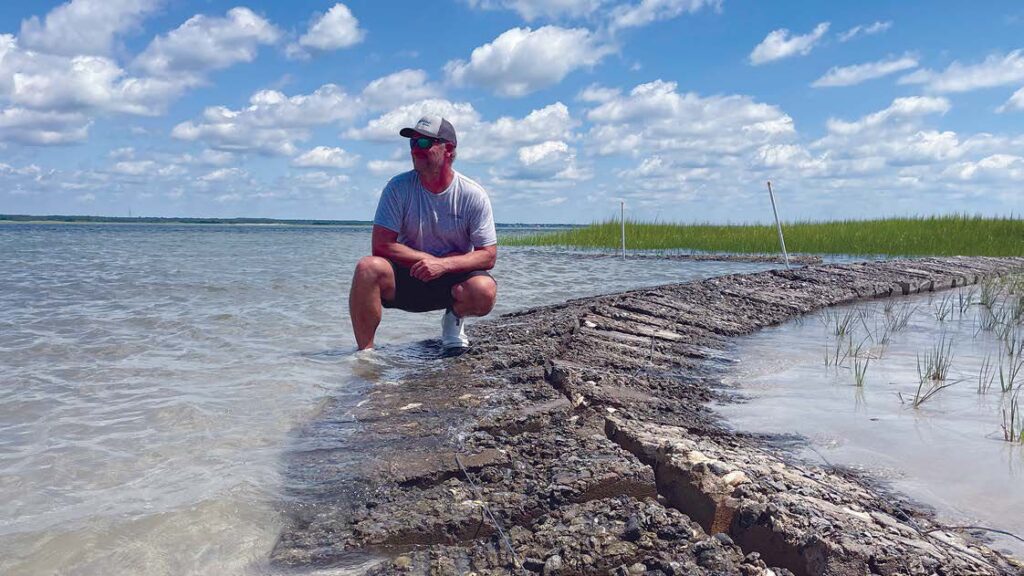
“The performances of alternative shoreline protection approaches during Hurricane Irene were compared by 1) classifying resultant damage to shorelines with different types of shoreline protection in three N.C. coastal regions after Irene; and 2) quantifying shoreline erosion at marshes with and without sills in one N.C. region by using repeated measurements of marsh surface elevation and marsh vegetation stem density before and after Irene,” the study said.
“In the central Outer Banks, where the strongest sustained winds blew across the longest fetch, Irene damaged 76 percent of bulkheads surveyed, while no damage to other shoreline protection options was detected.”
The mandate to save homes and docks by creating natural marshes behind low, intertidal barriers— called “sills”—was underway.
“Bulkheads and riprap revetments are the dominant method of shoreline protection in North Carolina and many other coastal states,” the UNC study stated. “Many property owners assume that bulkheads provide superior shoreline protection from erosion and storm damage compared to other methods.”
Hurricane Irene proved that assumption wrong. What worked better was to create a sill of oyster shells in the intertidal zone that would simultaneously encourage live oysters to colonize the sill and deposit sediment behind it.
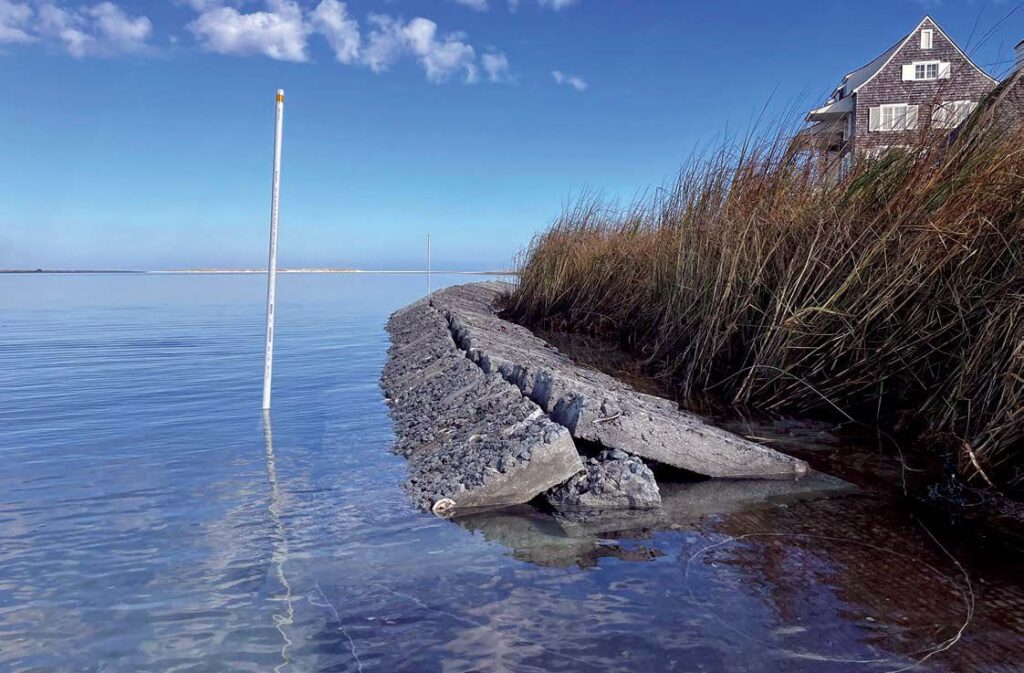
“When designed as an offshore sill slightly submerged at high tide, waves and wake roll over the top of the structure at high tide with reduced energy and deposit carried sediment behind the sill. This sediment gradually allows the marsh behind the structure to grow, providing a larger buffer for coastal storms,” the study authors wrote.
The traditional way to create marsh was to use oyster bags, explained Worth Creech, the director of operations for Native Shorelines (formerly RS Shorelines), a coastal North Carolina company that builds and restores natural marshes.
“You’d get oyster shells from restaurants and canneries, cure the shells and put them in plastic mesh bags,” Creech said. “Each bag would weigh 15 to 18 pounds and you’d stack them. The technique works really well, but it puts a lot of plastic into the environment and the reefs don’t look natural until they’re colonized with live oysters.”
Moreover, during the pandemic, that technique ran into its own supply-chain problems.
“We couldn’t get any oyster shell in 2020,” he said. “The oyster bar business just shut down. But we were still getting projects, so we had to figure out something different, something that would conform to the parameters set in the Coastal Area Management Act for living shorelines. Mary-Margaret McKinney, who does all our sales, drew some diagrams and I started experimenting.
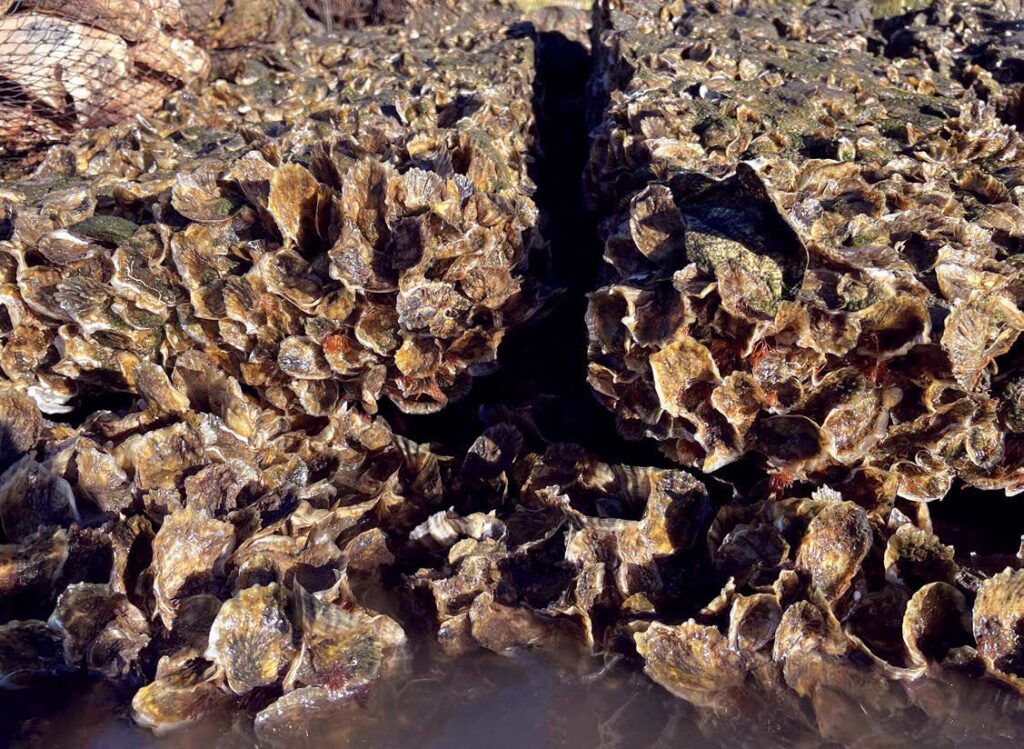
“I made some 50 different versions of combining cement and oyster shells before realizing that we have access to marl, which is a type of limestone from ancient sea shells. There’s more marl in nearby quarries than we could ever use. I played around with different mixes of marl, oyster shells and Portland cement and found a great formula.”
After trying different sizes of bricks to replace the oyster bags, Creech and McKinney settled on a brick that was 30 inches long, 4 inches thick and 10½ half inches wide, and weighed 90 pounds.
“I can pick this up, my guys can pick this up, and we can put 16 bricks on a pallet for installation,” Creech said. “The hardest part of the operation is getting the pallets into the water. We have a special vehicle that can drive on a plywood track. Sometimes we have to bring it in by barge. Everything is working toward standardizing the process.”
The bricks became a trademarked product called QuickReef, and it now comprises the majority of Native Shorelines’s business. That business has been growing steadily, in no small measure because it doesn’t compete with bulkheads—it reinforces them.
“It opens up the market,” Creech said. “If you put a bulkhead in the marsh to protect your back yard, as soon as you put in that bulkhead, the marsh is going to go away. We can place our structure in front of your bulkhead to protect the marsh. And if you don’t have a marsh in front of your bulkhead, we can put a living shoreline sill some five to 20 feet out that will slow the water and deposit sediment behind the sill and in front of your bulkhead. We can plant marsh grass, as well.”
Native Shorelines has installed QuickReef mainly in North Carolina, and is working and bidding other contracts in Virginia and Maryland. In addition, they’re testing larger bricks to restore shorelines with stronger wave action.
“I’ve built five-by-two-foot bricks that look promising,” Worth said. “We’ll have to use machines to install them, but that is the next step. The Coastal Federation is all about it and is helping us a lot. There’s a lot of learning going on right on now.”
For more information about QuickReef, visit https://nativeshorelines.com/.
Republished from Marine Construction Magazine Issue V, 2022







